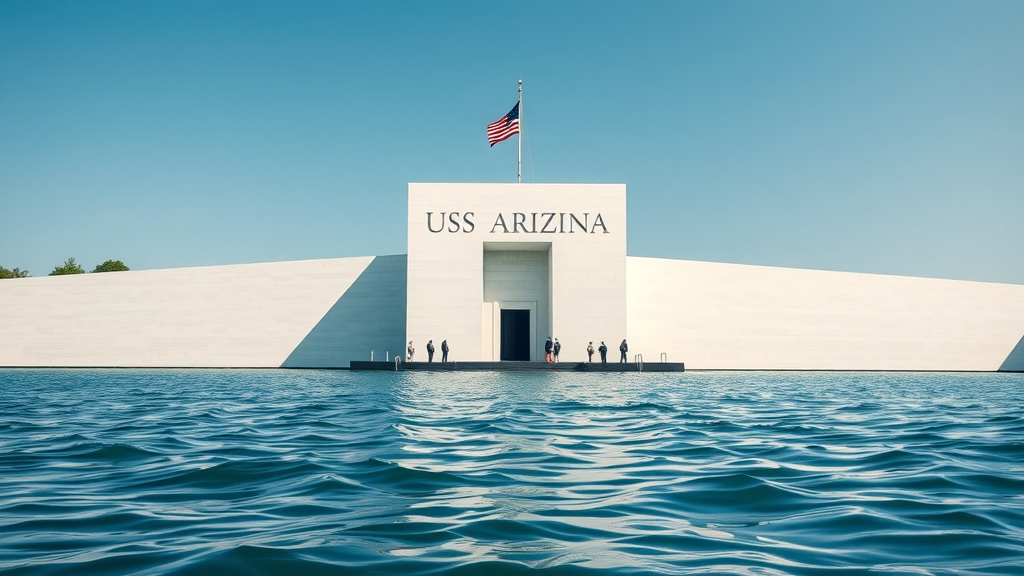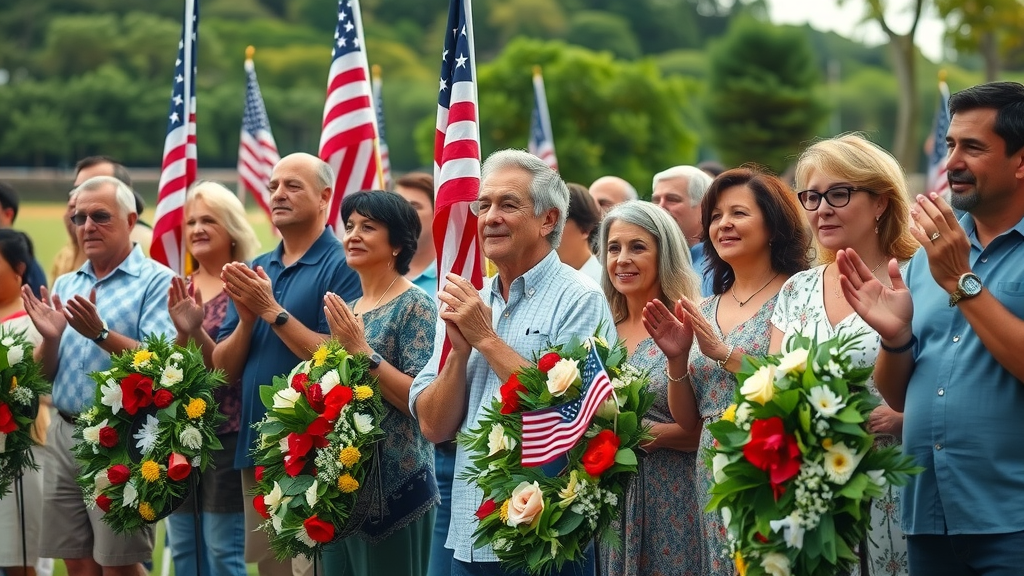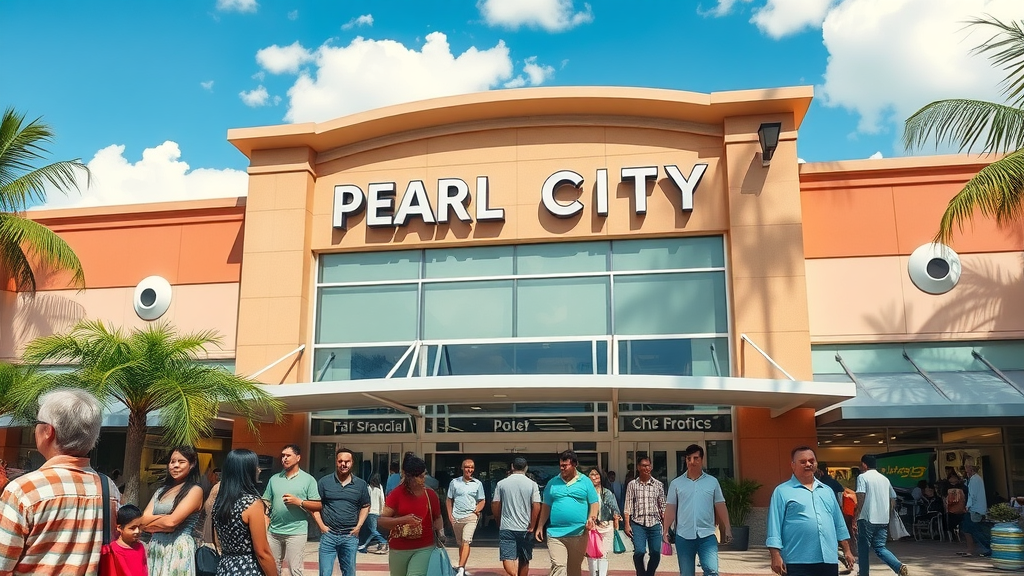Most people know Pearl Harbor for that fateful morning in 1941, yet few realize just how pearl harbor proximity shapes daily life for those nearby. Over 2 million people visit Pearl Harbor each year, but living close isn’t just about being next door to a historic site—it's an ongoing immersion in legacy, emotion, and identity. Whether you're a lifelong resident or a newcomer on the Hawaiian island, the nearness to this hallowed ground redefines your connection to history and community, offering powerful lessons that distant memories can’t provide. Read on to discover unexpected reasons why living near Pearl Harbor still profoundly matters.
Unveiling the Power of Pearl Harbor Proximity: An Unexpected Perspective
“More than 2 million visitors travel to Pearl Harbor every year—proximity isn’t just geographic, it’s emotional and historical.”

The pearl harbor proximity experience goes far beyond knowing you live a few miles from a national historic landmark—it influences your sense of self, your daily environment, and even your outlook on global history. For many residents, the constant sight of historic vessels, military ceremonies, and memorial visitors fosters a unique awareness of the attack on Pearl Harbor and its lasting impact. This nearness isn’t merely geographical; it carries weighty emotional and educational significance, forming part of the community’s DNA. From Dole Street in Honolulu to Ewa Beach, locals and visitors alike are drawn together by a collective memory of bravery, sacrifice, and the enduring lessons of World War II .
More than just a sightseeing hot spot, living near Pearl Harbor guarantees daily exposure to reminders of courage, resilience, and loss. The community is tightly interwoven with events and rituals—moments that locals take pride in sharing with visitors. Even years after the Japanese planes crossed the Pacific for their infamous surprise attack , the proximity ensures these stories remain alive, relevant, and accessible for all generations. In this article, you’ll see how close living ties transcend mere commutes and property values—they shape attitudes, inspire generations, and keep history alive and personal.
Why Pearl Harbor Proximity Transforms Your View of History
- Immediate connection to monumental moments like the attack on Pearl Harbor
- Enhanced respect for the United States’ military legacy
- Firsthand access to key locations: USS Arizona Memorial, Pacific Fleet, and more
- Participation in remembrance events seldom shared elsewhere
Pearl Harbor proximity gives you an unparalleled vantage point to understand both the triumphs and tragedies that shaped modern America. From attending ceremonies on the harbor's edge to observing the Pacific Fleet in action, residents develop a visceral connection to historical moments, such as the morning the Imperial Japanese Navy’s dive bombers swept across the sky. This closeness fosters ongoing participation in remembrance events —like the annual December 7th wreath-laying—that few others in the world get to witness firsthand.
The tangible access to places like the USS Arizona Memorial and battleship Missouri isn’t just a privilege; it's a daily lesson. Staring at the silent waters where more than 900 crewmen rest, or watching military drills along the shore, brings history out of textbooks and straight into everyday life. Living this close ensures the legacy of Pearl Harbor is not only remembered but also respected as an integral chapter in American and Hawaiian island identity.
The Emotional Impact of Living Near Pearl Harbor
A Constant Reminder: The Legacy of Pearl Harbor and World War II

For many, pearl harbor proximity evokes a deep emotional resonance—one that’s hard to escape, but even harder to want to lose. Every sunrise over the harbor tells a story of bravery and sorrow, while every late afternoon witness the respectful silence that befalls these waters. The loss of life during the attack on Pearl Harbor is a constant, gentle reminder of World War II’s cost and of the community's shared commitment to peace.
Walking local neighborhoods, you’ll find streets named after battleships and war heroes, and conversations with neighbors often weave in stories passed down from those who witnessed or served during that historic time. For both young and old, living nearby makes the tragedies and triumphs of the past more than just distant memories; they become collective reference points, teaching World War II lessons organically embedded in the island’s daily rhythm.
Residents develop an enduring empathy, not only for the soldiers lost but also for the families, survivors, and the transformation of the United States’ place in world history. The physical and emotional closeness to this landmark transforms ordinary mornings and nights into times of quiet reflection—and meaningful action.
Witness to History: Proximity to the USS Arizona Memorial and the Pacific Fleet

Standing just yards away from the iconic white arches of the USS Arizona Memorial gives you a rare perspective on the scale and solemnity of the attack on Pearl Harbor . For locals, the memorial’s presence serves as a daily prompt to remember those lost and to honor the commitment of the Pacific Fleet, stationed right in their backyard.
The steady flow of visitors and veterans, combined with regular ceremonies conducted by the United States Navy, keeps history ever-present. Residents often recount how the hum of Navy ships or the faint echo of a bugle call drifting over the harbor shapes their sense of time and place. It’s not uncommon for families to mark special moments—birthdays, anniversaries, holidays—with visits to these sites, cementing personal connections to national milestones.
The nearness to these memorials fosters stewardship; locals often become caretakers of memory, volunteering for events, leading educational tours, or simply sharing what it means to live so close to America’s most significant naval base. The stories and symbols found here are woven into everyday life on the Hawaiian island.
How Pearl Harbor Proximity Shapes Our Local Community
Community Ties to the Attack on Pearl Harbor

The attack on Pearl Harbor changed the trajectory of the island of Oahu—and its community identity was never the same. Decades later, that sense of togetherness persists thanks to pearl harbor proximity . Community centers, parks, and local organizations frequently mark anniversaries and milestones with remembrance events . From schoolchildren placing leis on memorial markers to elders recounting their memories, the collective spirit is palpable.
Living so near the Pacific Fleet and key historic sites encourages a special sense of pride—a belief that stewardship of memory is everyone’s responsibility. Hawaiians and residents from all walks of life find unity in this shared calling, building stronger relationships that honor both the fallen and the survivors of the attack on pearl harb .
The community’s connection too often extends into civic initiatives, history clubs, and educational outreaches—efforts meant to ensure the next generation understands the sacrifice marked by their surroundings. These ties keep the lessons of World War II vivid and the commitment to peace immediate and enduring.
Honoring the Past: Events and Memorials Shaped by Pearl Harbor Proximity
Annual events such as National Pearl Harbor Remembrance Day bring together residents, military personnel, and visitors in heartfelt ceremonies. The presence of memorials—US Arizona, USS Missouri, and numerous plaques—mean commemoration isn’t just a yearly affair but a rhythm that pulses through local life. Every wreath ceremony, flag-raising, and moment of silence deepens the close link between past and present.
It’s this very proximity that empowers local voices in telling the world why these rituals matter. Whether it’s helping a visitor find their way to the memorial or participating in restoration projects, locals have countless opportunities to leave their mark on history’s living canvas.
From youth-led history walks to interfaith services uniting diverse backgrounds, the ongoing engagement is both a means of healing and an act of hope. The pearl harbor proximity compels community members to take ownership not only of local heritage but also of the enduring values that bind the United States together.
Living Close: The Realities of Security and Identity
Safety and Surveillance Post-Attack on Pearl Harbor

After the attack on Pearl Harbor, heightened security became an indelible part of daily life in and around the naval base. Today, vigilance remains apparent; residents are familiar with checkpoints, patrols, and the subtle interplay between military operations and civilian routines. Living nearby instills an awareness of the delicate balance between safety, freedom, and respect for history.
The United States military’s presence offers both assurance and a reminder that geopolitical realities—particularly those formed after the infamous World War II morning—still shape the island of Oahu. Locals learn to navigate the subtle and overt security measures woven into the local landscape; over time, these become another layer of normalcy, rather than restriction.
Embracing pearl harbor proximity also means sharing a collective responsibility for vigilance. From neighborhood watch programs to community education about safe access to historic zones, residents partner with military and government agencies to guard not only their wellbeing but the integrity of a world-famous site.
Shared Identity on the Hawaiian Island
Living near Pearl Harbor ties residents to a shared identity that is proud, resilient, and nurtured by remembrance. The island of Oahu, especially those closest to the site, cultivates a sense of belonging not just through geography, but through the bonds of history, service, and cultural fusion. This shared identity distinguishes the local community; it’s seen in festivals, music, food, and daily interactions.
Over generations, proximity to Pearl Harbor fosters a kind of quiet strength and unity built on reflection and respect. Residents, whether of Hawaiian, American, or international roots, collectively honor sacrifices made at the base at Pearl Harbor and embrace the lessons of history as a foundation for community values and future growth.
The story of the pearl harbor proximity is not just a historical detail—it’s a living principle echoed in the commitments of local organizations, family traditions, and the resilient character of the Hawaiian island.
Pearl Harbor Proximity and United States National Memory
Educational Advantages: Learning About Japanese Planes, the Surprise Attack, and World War II

Students on the island of Oahu and mainland alike benefit from unique access to the tangible artifacts and stories of Pearl Harbor. Local schools often organize class trips to the grounds, allowing students to examine preserved relics—like pieces of the USS Arizona or shell casings recovered from the harbor—making lessons about the surprise attack vivid and memorable.
Unlike textbook coverage, pearl harbor proximity transforms abstract names—dive bomber, Pacific Fleet, aircraft carrier, and air force—into concrete, emotional realities. Students learn firsthand about Japanese planes launching from aircraft carriers, the path of the Imperial Japanese Navy, and the massive logistics behind one of history’s most significant surprise attacks.
Educational programs highlight how the attack led to the United States declaring war, ushered in a new era of world conflict, and transformed the lives of millions. These lessons foster critical thinking and empathy in students, giving them a deeper appreciation for both the cost of war and the importance of peace.
| Location | Pearl Harbor Proximity (Miles) | Historical Sites Accessible | Annual Visitors |
|---|---|---|---|
| Honolulu | 5 | USS Arizona Memorial, Pacific Fleet Headquarters | 2,000,000+ |
| Aiea | 2 | Battleship Missouri, National Memorial Cemetery | 500,000+ |
| Ewa Beach | 7 | Pearl Harbor Aviation Museum | 100,000+ |
Debunking Myths About Pearl Harbor Proximity
Myth: Only Tourists Benefit from Proximity
While Pearl Harbor remains a magnet for history buffs, school groups, and veterans worldwide, it offers unique daily benefits to those who live nearby. Locals access memorial events, educational initiatives, and community-led conservation projects often unavailable to short-term visitors. The proximity also shapes a sense of stewardship that deeply enriches local life, forging connections between generations and ensuring the living memory persists.
Living near this iconic site means the lessons, resources, and opportunities for reflection are part of daily existence—not just a destination but a core influence on personal development and community cohesion.
Myth: Living Near Pearl Harbor Means Constant Reminders of War
While it’s true that pearl harbor proximity brings frequent reminders of past conflict, it also fosters a powerful atmosphere of growth, resilience, and hope. The presence of memorials, museums, and military traditions actually emphasizes messages of peace, unity, and progress. Residents find inspiration in how the community has rebuilt and dedicated itself to preventing future wars.
Over time, the nearness to the historic site shifts from being a source of sorrow to one of learning and community pride—proof that proximity can transform wounds into powerful drivers for peace and remembrance.
Firsthand Stories of Pearl Harbor Proximity: Voices from the Community
“As a local, every sunrise over the harbor is a lesson in resilience and remembrance.”
Locals often share how their proximity to Pearl Harbor influences their worldview. For one Honolulu resident, walking along the shoreline each morning provides a meditative moment to reflect on the sacrifices of past generations. Another echoes that living so close to the water, seeing the Pacific Fleet anchored nearby, offers a stirring reminder of the unity required to overcome adversity.
During annual events or spontaneous gatherings at local parks, stories circulate about families divided by war, heroic acts by naval and air force personnel, and the shared duty to pass these lessons on. The continued bonding over history’s challenges creates an enduring sense of kinship and civic responsibility among residents.
Personal accounts from pearl harbor proximity residents help keep the memorial’s message relevant, ensuring the tragic events don’t fade but instead inspire acts of service, kindness, and awareness in daily life.
Pearl Harbor Proximity FAQs
What city is closest to Pearl Harbor?
The closest major city to Pearl Harbor is Honolulu, which is just around five miles away from the historic site.
How far did the Japanese travel to Pearl Harbor?
Japanese planes traveled nearly 4,000 miles across the Pacific Ocean, launching a surprise attack from aircraft carriers located north of Oahu.
Can I just walk around Pearl Harbor?
Many areas at Pearl Harbor are accessible to the public, including the Visitor Center. However, access to specific memorials and ships like the USS Arizona may require tickets.
How many bodies are still trapped in Pearl Harbor?
It is estimated that more than 900 crewmen remain entombed within the USS Arizona, serving as a powerful reminder of the attack on Pearl Harbor.
Six Unexpected Benefits of Pearl Harbor Proximity
- Daily interaction with living history
- Instant access to historical education
- Enhanced community pride and unity
- Opportunities to participate in remembrance events
- Continual reminders of sacrifice and peace
- Boost to local tourism and economy

These advantages reach every aspect of local life, from thriving small businesses that benefit from both tourist and local traffic to youth who grow up attuned to the significance of American history and peace. Community events, volunteer projects, and educational programs offered close to the harbor provide residents with constant opportunities to contribute and learn.
The local economy is bolstered by the tourism generated by Pearl Harbor sites, while the area’s cultural life grows richer through ongoing interactions with military guests and history enthusiasts. Most importantly, these daily benefits remind everyone that sacrifice, unity, and proactive citizenship are not distant ideals but living, breathing parts of their identity.
Pearl Harbor Proximity in Media and Popular Culture
Representation of Pearl Harbor Proximity in Films and Documentaries
The story of Pearl Harbor has been retold through award-winning documentaries, Hollywood blockbusters, and local productions. Films often capture the drama of the surprise attack , while documentaries tell the nuanced stories of resilience, trauma, and healing experienced by those living nearby.
Residents are sometimes featured sharing their unique insights, describing what it’s like to live where history unfolded and how they pass down these lessons. This representation ensures new generations worldwide continue engaging with the significance of pearl harbor proximity .
Virtual Tour of Key Pearl Harbor Sites for Local Residents
How Pearl Harbor Proximity Influences Generational Perspectives
Relaying the Story: Teaching the Attack on Pearl Harbor to the Next Generation

The constant presence of Pearl Harbor in family lore and daily experience ensures new generations never forget the past’s lessons. Parents and grandparents share firsthand accounts, photographs, and personal artifacts, transforming the attack on Pearl Harbor from a far-off event into a vibrant, relevant part of family and community life.
Schools, museums, and local events play vital roles in supplementing these stories, providing interactive experiences that help the youth grasp the significance of Japanese planes, dive bombers, and the far-reaching consequences of that fateful day in World War II.
This approach ensures that values such as resilience, remembrance, and unity are more than themes—they are inherited mindsets guiding future leaders of the island and the nation.
Exploring the Lasting Relevance of Pearl Harbor Proximity
“Proximity to Pearl Harbor doesn’t let us forget—it urges us to live thoughtfully and honor boldly.”
The ongoing resonance of pearl harbor proximity means local residents stand as guardians of both history and the values that fuel hope and unity. The visible reminders—memorials, educational markers, and frequent ceremonies—keep the story alive, continually inspiring intentional living and bold honor.
In a time when global events can feel distant and impersonal, this enduring nearness brings purpose and meaning to the daily experience of Oahu residents. Living close enforces the lesson that remembrance must lead to thoughtful action—both in private reflection and public observance.
Summary and Perspective on Pearl Harbor Proximity
Why Where You Live Still Matters When It Comes to Pearl Harbor
Being close to Pearl Harbor infuses everyday life with ongoing educational, emotional, and civic benefits. The deep sense of unity, pride, and remembrance emerges not just from learning about history, but from living it. Actual proximity ensures that the sacrifices and lessons of the attack on Pearl Harbor retain their power to influence how individuals and communities navigate the present.
Final Thoughts: Maintaining the Link from Past to Present
For residents of the Hawaiian island and beyond, pearl harbor proximity is the bridge binding personal narratives with national memory—proving that where you live still shapes how history lives on.
Let Pearl Harbor's living legacy inspire vigilant remembrance and everyday unity—no matter your distance, but especially if you’re lucky enough to call its shores home.
 Add Row
Add Row  Add
Add 




Write A Comment